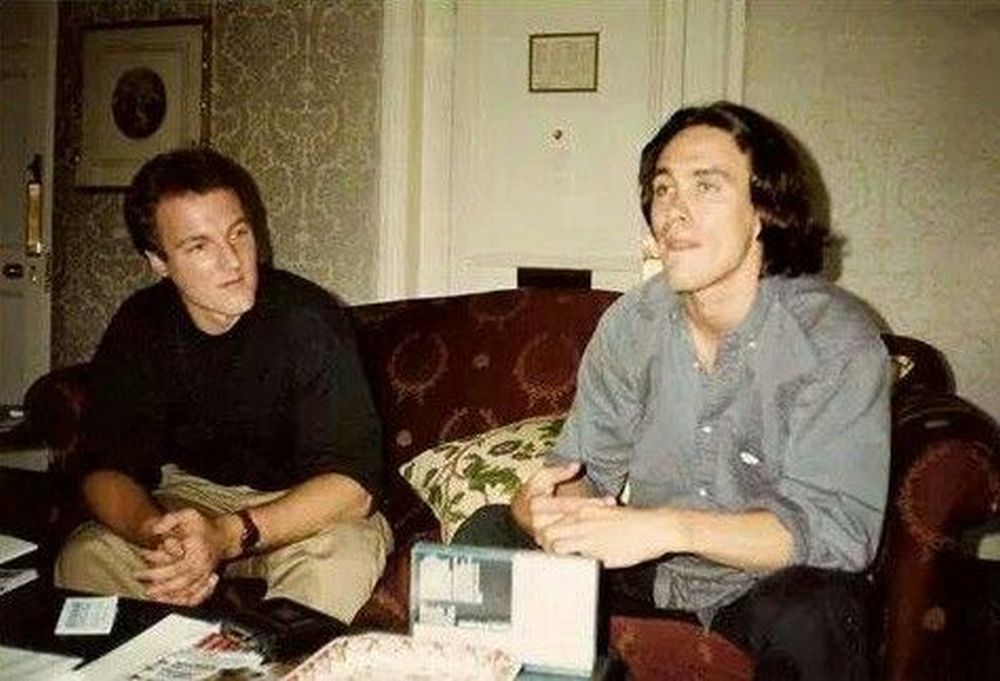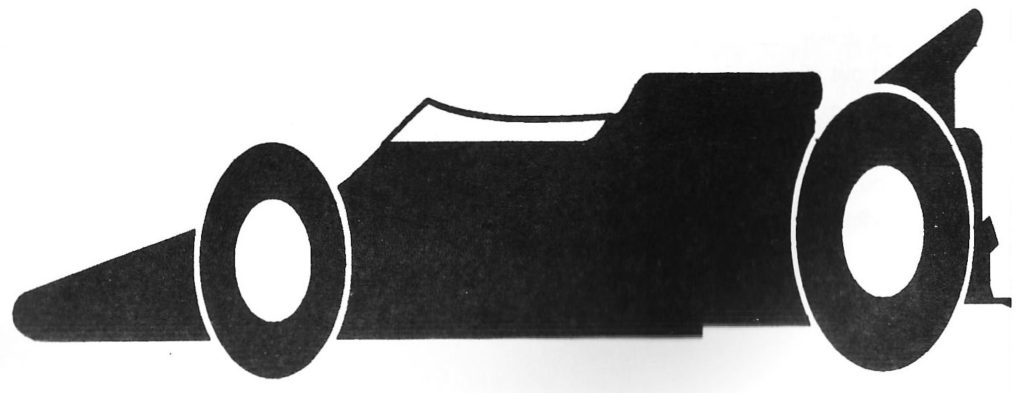Silence of the Lums
Urusei Yatsura 4 – Lum the Forever (Yamazaki Kazuo)

This film is a salutary lesson for anyone who still thinks anime is for kids, and I don’t mean in an icky, tenticular way. ‘Lum the Forever’ is not only the most bizarre animated movie I’ve seen, it probably outweirds all but the strangest live action films. If David Lynch was ever to direct anime, the result could well be something like this.
It’s surprising, as the original comics mix SF, slapstick and sex comedy. Very successfully, too; over 200 TV episodes, most of which are highly amusing, but about as subtle as a brick. However, the movies have always pushed animation story telling into new areas. UY’s creator, Rumiko Takahashi, occupies much the same, near-divine position in the manga world that Hayao Miyazaki does in the anime one, with strips like ‘Ranma 1/2’, ‘Maison Ikkoku’ and her ‘Rumic World’ series all proving immensely popular.
Some background first. The heroine is Lum, a frighteningly cute alien (sweet little horns, striped bikini) who came to Earth as part of a powerful invasion force. Due to circumstances too lengthy to explain here (involving Lum’s bikini and a sucker gun – as I said, subtle as a brick!) the alien fleet left, but Lum stayed behind with her ‘Darling’ Ataru Moroboshi, high-school student and full-time lech. His wandering eye gives him much grief, as Lum’s touch can deliver an impressive number of Volts when she gets miffed. Also drifting in and out are the strangest collection of oddballs, both alien and earthling, this side of Westminster.
UY’s appeal is partly because it’s often easy to understand, even in Japanese. However, ‘Lum the Forever’ is almost unique in that it’s harder to handle in a subtitled version. You’re forced to cope with things that could be mentally ignored in the Japanese release: it’s one thing for a film to make no sense when it’s in a foreign language, quite another if you can understand the dialogue. Though the film is perfectly coherent, each plot point clear as crystal, it’s like a shattered mirror: every fragment gives a reflection, but the pieced-together whole shows only distortion.
While I’m normally opposed to the plot-synopsis-as-review mentality, in this case I’ll make an exception, as the story is the movie. It starts off simply: Lum, Ataru and their friends are making a movie, re-enacting a local legend. As part of this, they chop down an ancient, dying cherry tree – and that’s when things start to get weird. The weather becomes unseasonable; the town is plagued with dragonflies; and most worrying of all, Lum begins to fade away. The first thing to go is her “Ultra-Mega-Fantastic-Shock”, which now only tickles; her flying ability dwindles, and vanishes; her horns also go; and she begins to evaporate from photographs…
The rest of the inhabitants aren’t immune and have vivid dreams – or are they? It’s never made clear, and the film blurs to zero distinctions between reality, dreams, the film-within-the-film and hallucinations. This area was also covered in ‘Beautiful Dreamer’, the second UY movie – the whole town is sucked into Lum’s dreams – but that possessed structure and coherence. While I felt this worked against the subject matter, it’s still excellent, and is certainly more accessible.
Mendo, producer of the film-within-the-film, theorises that Tomobiki, their town, has developed a consciousness and is exerting it’s will to shape external reality. If Tomobiki is a living entity, with inhabitants as it’s cells, Lum, being an alien, would be regarded as a foreign invader – a disease – and the strange phenomena are symptoms caused by the town’s “immune system” fighting back. It should now be evident that we are not in Saturday morning TV-land here.

Opinion differs on how to break the ‘fever’: Mendo engages in acts of mass destruction, “because it’s something to do”; Ataru runs away; Lum goes in search of the town’s consciousness. But it is Ataru’s deep affection for Lum that finally convinces the town to accept her, and return to normality – whatever that may be.
This film knows, and makes full use of, the things which animation is best at, creating an alternate reality that is both plausibly familiar and totally strange. In ‘Lum the Forever’, the normal and the strange, the trivial and the important, are all treated with equal intensity, and the viewer is left to work out which is which. It’s like doing a jigsaw puzzle where some pieces are missing, and others are from a different picture altogether.
It’s a hard slog but ultimately worthwhile, as technically, the film is excellent. A grace and style evoke films like ‘Kwaidan’, with a dedicated attention to detail. It’s highly cinematic, using all the armoury of the modern film – compare thiis to Western animation, which has hardly evolved since the early days of Disney. Witness the unanimous adulation heaped on the ballroom sequence in “Beauty and the Beast”, by those who hadn’t seen a zoom in a cartoon before. And it took HAL-like computing power for Disney to achieve things no more impressive, just more blatantly trumpeted, than Kitty Studio managed without any Oscar nominations.
It could never be made as a live-action movie. Well, it might be possible – with a budget the size of Roseanne Barr’s lunchbill, and if you were prepared to hang around for FX technology to catch up a decade or two – but even so, the end result would not be as compelling, plausible or impressive. Deeply strange, and a million miles from the banalities of dancing candlesticks.
[Various bits of ‘Urusei Yatsura’ are being released with subtitles by Anime Projects over the course of ’94. ‘Lum the Forever’ should, all being well, hit the shops in October, though you are strongly recommended to start with something easier like a few TV episodes! Contact Anime Projects, 64 Stanley Mead, Bradley Stoke, Bristol, BS12 0EG. Tel (0454) 619170]

Rumic World: Fire Tripper
Here’s the spot to review Manga’s latest arrival (must resist the temptation to call them Island World now!), the first UK release based on Rumiko Takahashi manga. As mentioned earlier, ‘Rumic World’ covers one-off stories, presumably written when she doesn’t fancy a 36-volume series, but like virtually everything else she’s done (shades of Stephen King?), they’ve become OAVs. [It’s also a good place to grovel: “Mermaid’s Forest” isn’t strictly part of the Rumic World…] The heroine here is a girl, caught in an explosion with a neighbour’s son and hurled back to violent medieval times. There she meets the young, guardian of a village, who decides he’s going to marry her – whether she wants it or not! She gradually falls in love, but then discovers a disturbing possibility about her origin.
This goes against the grain of most previous Manga releases, which have been mainly “brain-off” entertainment. As with ‘Lum the Forever’, you have to concentrate; here, to follow the time-line and keep track of which character is which (and indeed when!). But expend the effort, and you’ll be rewarded by something that’s distinctly different and is a challenging and imaginative story, though the translation is, er, interesting (“You’re all talking through your bums”) and the cover picture a tad misleading. It’s very close to the manga, unsurprisingly so, as Takahashi is known to oversee the transferal process, with power to fire and hire at will. The animation is notably different from the more realistic approach of, for example, ‘Doomed Megalopolis’, and may initially take a little getting used to. But you’d better do it, as with the rest of ‘Rumic World’ and ‘Urusei Yatsura’ to come, 1994 could well be her year. B+






